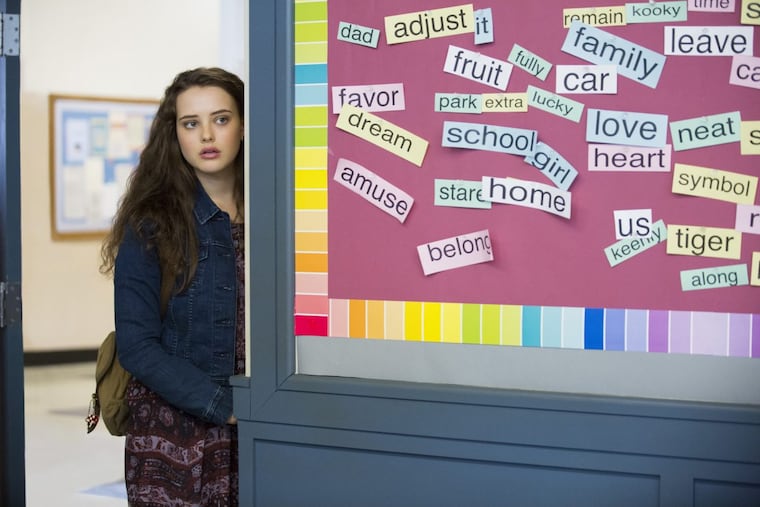Netflix series ‘13 Reasons Why’ may reduce suicide risk for young adults who watch to the end, study finds
Students who watched the entire season were less likely to self injure or seriously consider suicide, even compared to those who did not watch the show at all.

With the third season of the Netflix series 13 Reasons Why set to premiere later this year, controversies over the show’s impact on teen suicide and mental health continue.
Many argue the that show, which tells the fictional story of a teenager who dies by suicide and leaves behind messages for those she claims influenced her decision, glamorizes suicide and presents it as an effective way to end suffering or extract revenge on hurtful classmates.
But a study released Wednesday found students who watched the entire second season were less likely to purposely injure themselves or seriously consider suicide — even when compared with those who did not watch the show.
“They were actually better off than if they hadn’t watched it,” said Dan Romer, coauthor of the study and research director of the Annenberg Public Policy Center at the University of Pennsylvania.
The results were not what Romer was expecting. Like many in the public health field, he thought the show’s depiction of suicide was “brutal,” and worried about its inspiring copycat events at a time when suicide is the second leading cause of death for 15- to 24-year-olds, and suicidal thoughts are driving more youths to emergency rooms.
“But we’ve learned that there are some young people who can see positive things in a story like this,” he said.
The study, published in the journal Social Science and Medicine, surveyed 729 adults ages 18 to 29, before and after the May 2018 release of the second season.
Researchers found the beneficial effects only existed for participants who finished the entire season. Those who stopped watching partway through were at greater risk for suicide.
That may have to do with the reassuring ending, Romer said. Much of the show’s second season focuses on one character’s response to his classmate’s suicide. Although he struggles with pain and grief at first, he progresses to a stronger place by the end of the season.
“That’s a hopeful message,” Romer said. “Even though you’re plagued by thoughts of suicide and guilt, you can move past it.”
The first season focused mainly on the harm that the suicide inflicted on the victim’s friends and family. After its release, Google searches about suicide spiked, and physicians said that several children created lists of “13 reasons why” they wanted to kill themselves. At least one hospital saw an increase in admissions of children who exhibited suicidal behavior.
But even then, a study of Brazilian and American adolescents found that those who watched the entire first season reported fewer thoughts of killing themselves. Other studies, which showed an increase in suicide risk, did not differentiate between those who watched a few episodes or the full season.
Together, these findings suggest Netflix should try to make the series less graphic and dramatic, because, if it were easier to watch, more people might continue watching to the end and experience positive effects, Romer said.
Previous research has shown that coverage of suicide methods, particularly in the news, can be harmful and inspire copycats. But coverage about people who overcome a suicidal crisis can be helpful.
Public health experts suggest that Netflix should show more characters seeking help for mental health concerns and getting adequate support from adults in their lives. They say the series should steer away from depicting in-school memorials, which are among the things schools are specifically instructed not to do after a student suicide, for fear of glamorizing the event.
Prior to the second season, Netflix created a video message from the cast warning viewers that the series might be difficult for people struggling with suicidal thoughts. But Romer and his colleagues found that didn’t do much to help.
In fact, those who saw the warning were actually more likely to watch the show, by about 20 percentage points.
“You can make a trigger warning that warns people, but it also promotes your show,” Romer said. “Overall it seems to have increased awareness of the series.”
The study also found that people who watched the show to the end were more likely to express interest in helping a suicidal person than those who stopped in the middle. “They came away with a greater understanding of how harmful it can be for people to mistreat each other,” Romer said.
Netflix made a similar claim in 2018, saying the show opened up the public conversation around difficult topics and fostered empathy. The company conducted its own survey, which found 51 percent of teens who watched the show apologized to someone for how they’d treated them.
Still, Romer said, it’s difficult to predict what the effects of the show will be down the line. The study only followed people for one month after the season ended.
It’s possible the show will increase students’ risk for suicide only slightly, but that will be exacerbated by another disturbing event in the future, he said.
“These shows are complicated, and the effects they have on people are different for different people,” he said. “That’s why it’s very hard to predict or give advice about who should or shouldn’t watch something like this.”